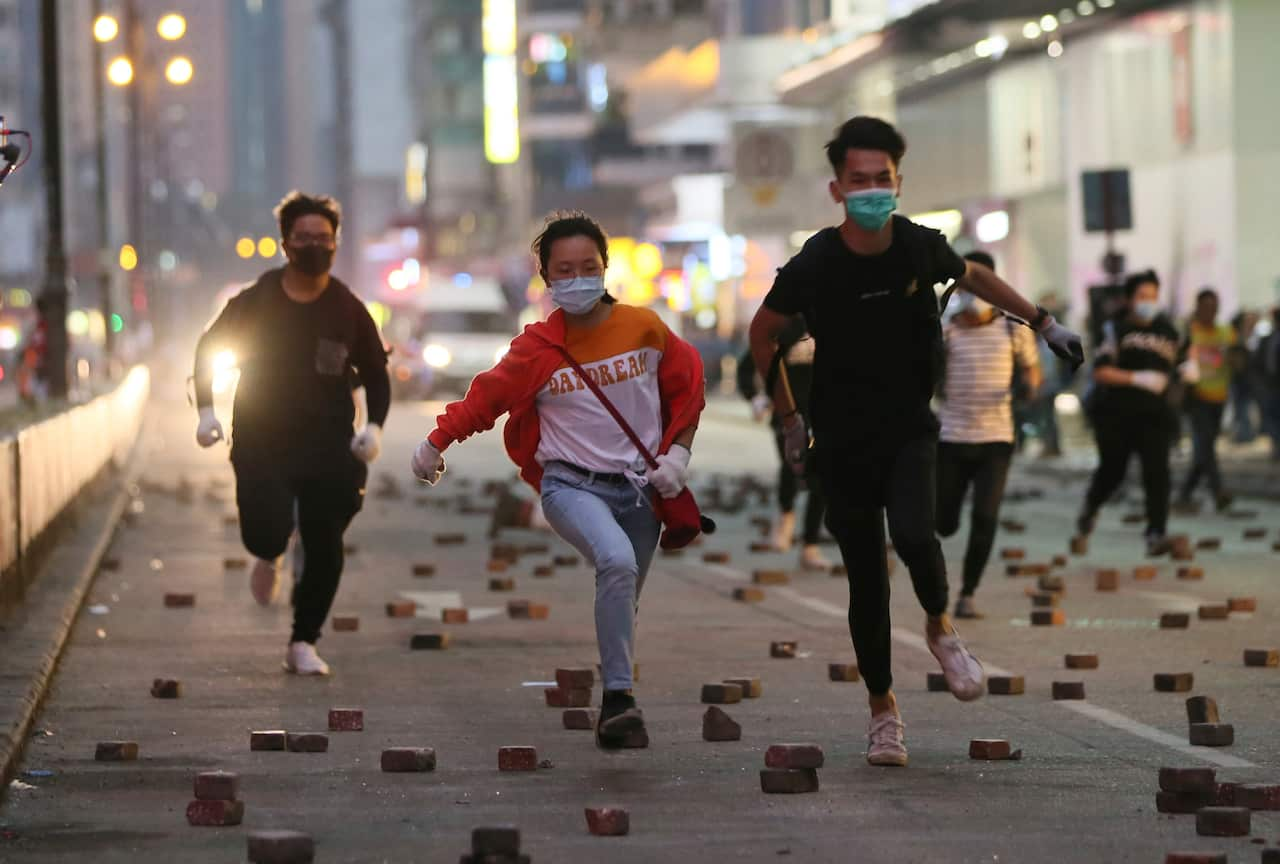Some Australian exchange students are choosing to remain in Hong Kong despite calls from their universities to consider returning home after clashes between police and broke out on campuses across the city.
Australian universities, including the University of Sydney, University of Queensland and the Australian National University, began pulling exchange students out of Hong Kong late last week as .
In the most extreme case, hundreds of protesters barricaded themselves inside the Hong Kong Polytechnic University (PolyU) for more than three days, while police fired rubber bullets and tear gas at them.

Samuel Goh in Sai Kung, Hong Kong. Source: Supplied
Monash University engineering student Samuel Goh, who is on exchange at the University of Hong Kong (HKU), told SBS News he won’t be leaving the city yet.
“I know that a lot of people are leaving Hong Kong right now and it’s almost every day that I see a suitcase leaving my dorms or residence. I’ve seen a lot of crying because a lot of people aren’t ready to go,” the 23-year-old said.
“But for me, personally, I do think I am feeling comfortable enough that I will give Hong Kong more of a chance.”
On Thursday, HKU posted on Facebook that it would be suspending classes for the remainder of the semester, citing “uncertain and unsafe traffic conditions”.

The damaged facilities inside the Polytechnic University after a three-day stand off between protesters and police. Source: EPA
Mr Goh, who is planning to remain in the city until the end of the semester in mid-December, said he’s in “limbo” because he doesn't know what his university assessments will look like now that they've been moved online.
“I'm just not a fan of the violence at all and it's really sad to see,” he said.
Sam Climo, a University of Sydney (USyd) student at HKU, also told SBS News she had chosen to remain in the city against recommendations from her university.
“I don’t feel like I am in any danger, I feel relatively safe in Hong Kong,” she said.
“Basically, I still want the opportunity to travel a bit more and continue my studies.”

Sam Climo says she doesn't feel like she's in danger in Hong Kong. Source: Supplied
A USyd spokesperson told SBS News the university had written to students in Hong Kong on Friday, advising them to come home. Of the USyd 18 students on exchange in Hong Kong this semester, the majority had left, the spokesperson said.
Ms Climo, 19, said she had been involved in some of the peaceful protests earlier in the year. During the National Day protests, on 1 October, she said she was “tear-gassed quite a lot”.
“That was the only time I felt properly unsafe and was quite scared,” she said.
‘It all happened very quickly’
University of Queensland (UQ) student Erin Jory was also on exchange at HKU until Sunday, when she was forced to leave the city amid the increasing violence.
The 21-year-old international studies student was originally planning to stay until the end of the semester but was informed by UQ on Thursday that if she did not leave the city by the following Tuesday she would no longer be covered by the university’s insurance.

Erin Jory in Hong Kong. Source: Supplied
“It all happened really quickly,” she told SBS News from Thailand.
“It’s still sinking in I think."
Ms Jory had been in Hong Kong since the end of August but said the protests, which have been raging for more than six months, did not affect exchange students directly until recently.
She said she arrived on campus, in the Sai Wan area of Hong Kong Island, for her Monday morning classes last week only to find they were cancelled.
“I sort of knew because that day was meant to be the memorial for the HKU student protester that passed away,” she said.

Protesters flee riot police near Polytechinc University. Source: Yomiuri Shimbun
“I stayed at the university in the library and studied. I came out at lunchtime and noticed all the shops were closed and there were a lot more protesters on site.
“I tried to leave and it turned out the university was barricaded with furniture and things.”
By Tuesday evening, students had used bricks to create blockades, smashed furniture, and left Molotov cocktails scattered around the footbridge, Ms Jory said.
“[The protesters] are all students my age, they are someone I could have sat next to in class and just to see how much they are willing to sacrifice,” she said, adding that the recent situation at PolyU was “heartbreaking”.

Police arrest a protester after he tried to escape from Polytechnic University during the siege. Source: EPA
“They do know how serious it is and how it could affect their futures, but they are still willing to risk it all. That is really sad.”
On Tuesday night, HKU posted a message to Facebook announcing they would be restarting “most University operations.''
The statement, attributed to Acting Executive Vice-President YC Richard Wong, also said the university grounds would only be open to staff and students, who must carry a valid university ID while on campus.
A small group of protesters has so far defied warnings to surrender and remain inside PolyU university, fearing they will be arrested or shot by police if they leave.
The siege began on the weekend, with the ensuing confrontation turning into the most intense of the protest movement.
Protesters repelled police surges with Molotov cocktails, arrows and bricks and officers threatened to use live rounds.

